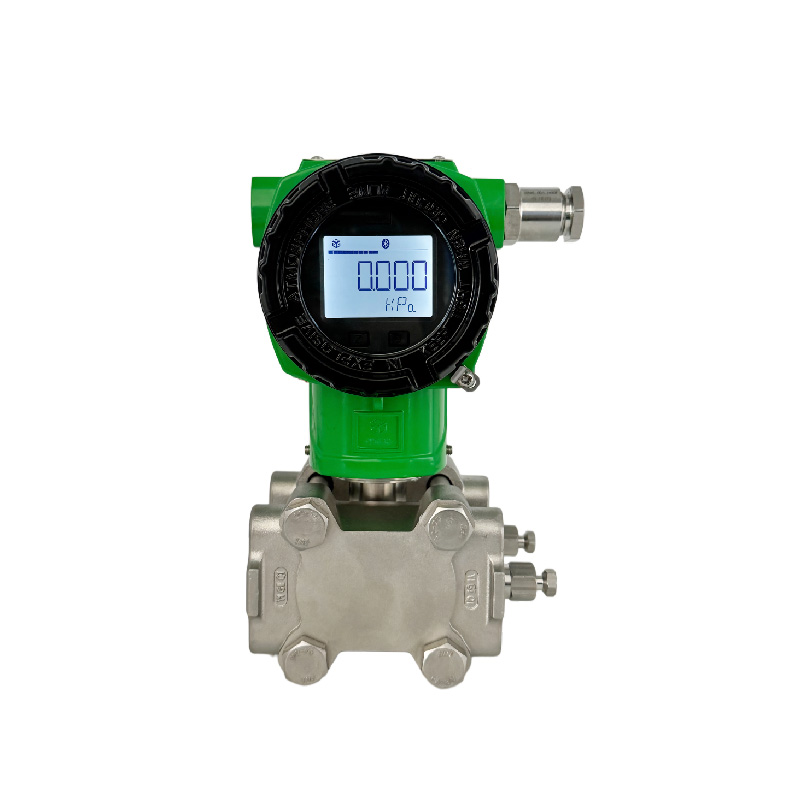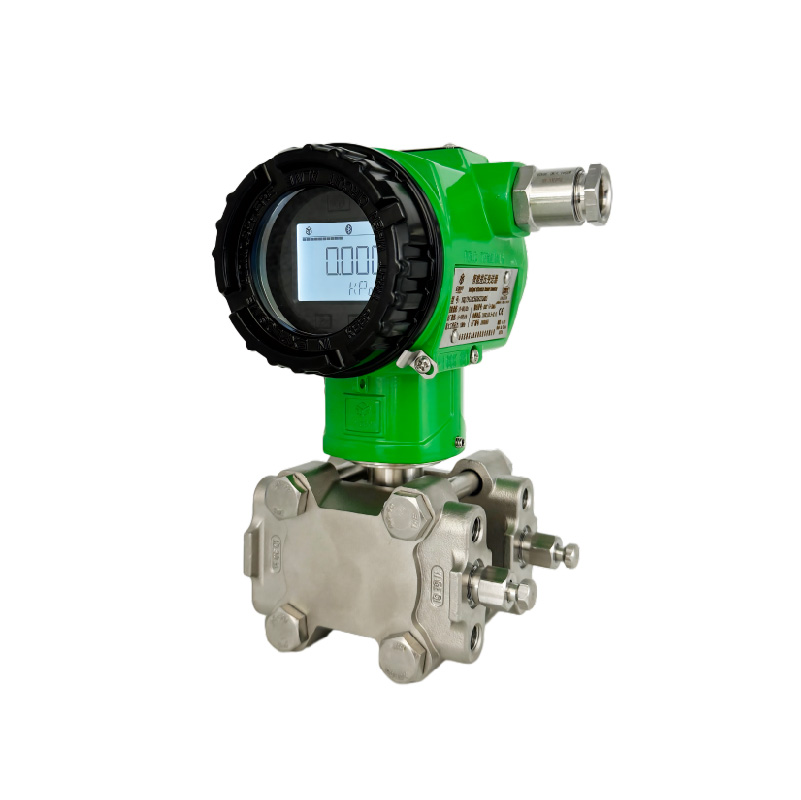Differential pressure transmitters play an extremely crucial role in numerous industrial fields. They can accurately measure pressure differences and provide important data support for the production process. However, like any equipment, differential pressure transmitters may encounter various faults during operation. This article will deeply analyze the common fault problems of differential pressure transmitters and elaborate on the corresponding solutions in detail, helping relevant technical personnel quickly diagnose and repair faults and ensuring the smooth progress of production.
Here are the types of faults and solutions for differential pressure transmitters provided by Yigeqi:

I. Signal Output Faults
(A) No Output
When a differential pressure transmitter has no output signal, the power supply should be carefully checked first. Confirm whether the power supply voltage is within the normal range. Generally, the working voltage of a differential pressure transmitter should be no less than 12V. At the same time, check the accuracy of the wiring and see if the power cable is firmly connected to the corresponding terminal, without any loose or virtual connection. For a transmitter with a meter head, a fault in the meter head may also be one of the reasons for no output. In this case, the meter head needs to be tested and replaced if necessary. In addition, a multimeter and other tools should be used to check the working power supply and output current value of the differential pressure transmitter. If the output current value is always zero, it is very likely that the differential pressure sensor or acquisition module is damaged. In this situation, only a new differential pressure transmitter can be replaced to restore normal operation.
(B) High Output
High output may be caused by improper range selection. If the selected range is too small and the actual measured pressure difference exceeds the range, the transmitter will output a high signal. At this time, it is necessary to re-evaluate the measurement requirements and select a suitable range of differential pressure transmitter. In addition, an abnormal increase in the flow rate in the pipeline may also trigger this fault. It can be solved by appropriately adjusting the flow rate in the pipeline to make it return to the normal range.
(C) Low Output
An oversized range is one of the common factors leading to low output of a differential pressure transmitter. When the range is far beyond the actual measured pressure difference, the output signal will be low. In this case, the range of the transmitter should be adjusted to an appropriate interval according to the actual situation. At the same time, a blocked impulse pipe may also cause low output. It is necessary to carefully check the impulse pipe. If any foreign matter is found to be blocked, it should be cleaned in time to ensure the smoothness of the impulse pipe.
II. Inaccurate Measurement
(A) Zero Drift
The zero drift phenomenon is manifested as that when there is no pressure acting on the differential pressure transmitter, its output signal is not zero. This is usually caused by the aging of the internal components of the sensor or the change of the ambient temperature. To determine whether there is zero drift, the output signal of the transmitter can be measured under no pressure. Once drift is found, it can be solved by recalibration. The specific operation method is to use a screwdriver to adjust the zero position adjuster behind the nameplate of the transmitter. Rotating clockwise can increase the output current of the transmitter, and rotating counterclockwise can decrease the output current until the output current is adjusted to 4mA.
(B) Diaphragm Box Sticking
If the diaphragm box of a differential pressure transmitter is stuck by the crystallization of the measured medium or other foreign matters, the displacement transmission of the diaphragm box will be limited, resulting in extremely small or even no change in the output of the differential pressure transmitter, and the change process is slow. In response to this situation, first empty the positive and negative pressure chambers of the differential pressure transmitter, and then gently tap the outer shell of the transmitter to eliminate the friction and sticking phenomenon of the diaphragm box and make it return to the free state. If the problem is not solved after this operation, the tapping force can be appropriately increased, and at the same time, emptying operations are carried out multiple times to try to completely discharge the dirt.
(C) Diaphragm Box Oil Leakage
When there is an oil leakage in the diaphragm box of a transmitter, the output indication will gradually decrease and finally no longer change with the parameters of the measured medium. At this time, the only solution is to replace the diaphragm box of the transmitter or refill it with oil.
(D) Blockage
A blockage on the positive pressure side will cause the transmitter's output current to be low or even lower than 4mA, while a blockage on the negative pressure side will cause the output current to be high or even exceed the maximum value. This is mainly caused by the long-term failure to drain the measuring impulse pipe or the measured medium being viscous and containing particulate matter. For this kind of blockage fault, various dredging measures should be tried, such as using compressed air to blow, wire dredging, drill drilling, etc. If it is really impossible to dredge, only a new impulse pipe can be replaced.
(E) Leakage
A leakage on the positive or negative pressure side of a differential pressure transmitter will inevitably lead to inaccurate measurement. Therefore, once an abnormal measurement is found, the sealing condition of the connection should be carefully checked to find the leakage point. For the leakage problem, it can be solved by replacing the sealing ring, reinstalling the connection parts, etc., to ensure good sealing of the connection.
(F) Internal Leakage of Balance Valve
The internal leakage of a balance valve will balance out part of the positive and negative pressure differences of the transmitter, resulting in a low output indication. If the internal leakage is serious, the output indication may drop to 0MPa. For the problem of internal leakage of the balance valve, only a new balance valve can be replaced to restore the normal operation of the differential pressure transmitter.
(G) Reverse Connection of Impulse Pipes
The reverse connection of high and low impulse pipes will cause the transmitter's output current to be low or even lower than 4mA. This fault is more common when installing a new meter. For a smart transmitter, it can be solved by changing the relative position and impulse pipe interface between the detection component and the transmission component or making corresponding settings in the parameter selection page; for an ordinary transmitter, it needs to be reinstalled correctly to ensure the correct connection of the impulse pipes.

III. Unstable Output
(A) Power Supply Voltage Fluctuation
The instability of the power supply voltage will directly lead to the fluctuation of the output signal of the differential pressure transmitter. To solve this problem, measures need to be taken to stabilize the power supply voltage, such as installing a voltage stabilizer and other equipment, to ensure that the differential pressure transmitter can obtain a stable and reliable power supply.
(B) Electromagnetic Interference
During the on-site installation and wiring process, if various signal wires are concentrated in the same multi-core cable or bundled together, interference is very likely to occur between the signals. Especially when the signal wire and the power wire share a long pipeline, the interference is particularly serious, which may lead to communication failures, false indications and other phenomena of the differential pressure transformer. To avoid electromagnetic interference, the signal wire and the power wire should be wired separately. At the same time, check whether the shielding layer of the cable is intact. If the shielding wire is broken or there is a virtual connection at the cable connection, oxidation of the exposed cable core leads to poor contact, etc., it should be reconnected or the cable should be replaced in time.
(C) Process Condition Changes
If other process parameters in the production process, such as temperature, flow rate, liquid level, etc., also fluctuate frequently, then the unstable output of the differential pressure transmitter may be caused by the pressure difference change due to the process condition change. At this time, a comprehensive inspection of the entire process flow needs to be carried out, deeply analyze the reasons for the process condition change, and take corresponding measures to adjust and optimize to stabilize the production process conditions, thereby solving the problem of unstable output of the differential pressure transmitter.
(D) Control Valve Problem
If the differential pressure indication is associated with control, for example, connected to a control valve, then it is also necessary to check whether the output of the positioner on the control valve is constant. If the output of the positioner is unstable, the valve needs to be overhauled and debugged to ensure the normal operation of the control valve and thus ensure the stability of the output of the differential pressure transmitter.
The fault diagnosis and repair of differential pressure transmitters require technical personnel to have solid professional knowledge and rich practical experience. Through a deep understanding and proficient mastery of the above common fault problems and their solutions, accurate judgments can be made quickly when a fault occurs, and effective measures can be taken to handle it, minimizing the impact of the fault on production, improving production efficiency and the reliability of equipment operation.
In short, in industrial production, it is crucial to solve the fault problems of differential pressure transmitters in a timely manner. Only by ensuring the stable operation of differential pressure transmitters can accurate and reliable pressure difference measurement data be provided for the entire production process, laying a solid foundation for the safe production and efficient operation of enterprises.
In conclusion, differential pressure transmitters are essential components in industrial settings. Understanding and addressing their fault issues promptly and accurately is not only vital for maintaining the integrity of measurement data but also for ensuring the seamless operation of the entire production chain. Technical personnel must stay vigilant and continuously update their knowledge and skills to handle any potential problems that may arise. By doing so, industries can rely on these transmitters to function optimally, leading to enhanced productivity and safety standards.




